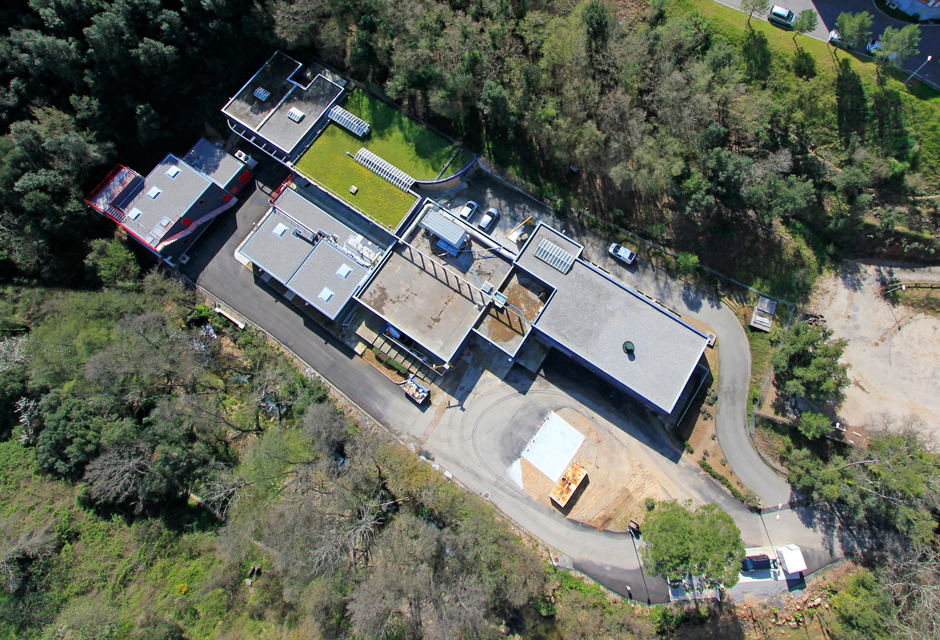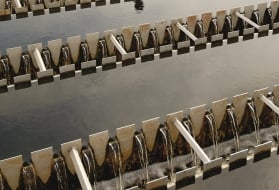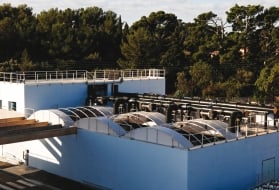Sophia Antipolis wastewater treatment plant (France)

In November 2009, the "Syndicat Intercommuncal" for the extension and management of the Sophia Antipolis plant, advised by BG Ingénieurs Conseils, entrusted the plant's extension to the "SUEZ/EITP" group.
Commissioned on 24 January 2012, its treatment capacity increased from 26,000 population equivalent (PE) to 50,000 PE to conserve the Bouillide, the plant's treated water receiving water body. This river flows into the Brague and has a saver low water level. Water lost in this flow feeds the Antibes water table which serves as the town's water supply.
In order to meet regulatory requirements aiming at improving the quality of treated water and thereby protecting the receiving body and water resource, the "Syndicat" and BG Ingénieurs Conseils chose :
- advanced nitrogen treatment, for a more effective treatment quality than before, with significant and definitive removal of the nitrogen contained in water (eutrophication factor in the river);
- disinfection using ozone rather than final chlorination in order to remove micropollutants too.
With this process, the Bouillides plant has become the first plant in France to treat micropollutants and to meet the requirements of the European Water Framework Directive (WFD) which imposes the reduction in the release into the natural environment of 41 priority substances. This is therefore fully in line with a sustainable development approach and the protection of water resources.
treating micropollutants
The name micropollutants designates organic or mineral substances which because of their toxicity, their persistence and their ability to bioaccumulate, can lead to negative effects on the environment and/or organisms. They are present in numerous products that we consume or use every day (medication, cosmetics plant health, insecticides, etc.) whether this be privately or industrially.
The progress in the area of laboratory analyses increasingly demonstrates their presence in the aquatic environment at extremely low levels of concentration at around a nanogramme per litre or microgramme per litre (hence their name, micropollutant). Some of these substances may have potentially direct or indirect chronic effects on ecosystems (e.g. feminisation of fish due to the endocrine disrupting effects of some substances found in the aquatic environment), even on human health.
Upon request of the "Syndicat", studies on the presence of micropollutants in water undertaken by BG Ingénieurs Conseils, highlighted the need to have a more advanced removal treatment process than disinfection using chlorine, as had first been planned. It is the chemical treatment using oxidation by ozone which has proven to be more effective in the case of the compounds present in Sophia Antipolis' wastewater.
treatment line
- Pretreatment
- screening = 2 x 12 mm screens
- grit-oil removal = 2 works (+ treatment of grit and grease)
- straining = 2 x 3 mm strainers
- Primary treatment
- Primary settling - 2 x Densadeg-type lamellar settling tanks
- Biological treatment of carbon and partial treatment of constituted nitrogen
- Biofiltration C = 4 x existing Biofor® C + 2 additional Biofor® C to raise the capacity to 50 000 PE
- Biofiltration N = 4 x existing Biofor® N + 2 additional Biofor® N to raise the capacity to 50 000 PE
- Treating micropollutants and disinfection
- Ozonation (O3) = 1 ozone operator + 1 ozone contact column
- Complete treatment of nitrogen
- Denitrification = 3 Biofor® DN
Bookmark tool
Click on the bookmark tool, highlight the last read paragraph to continue your reading later












